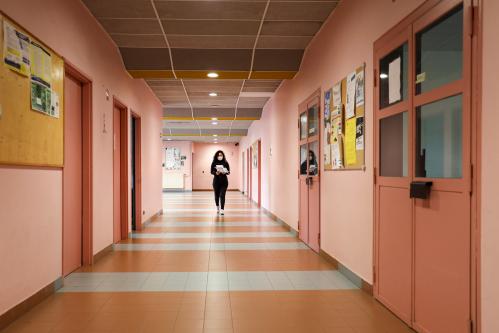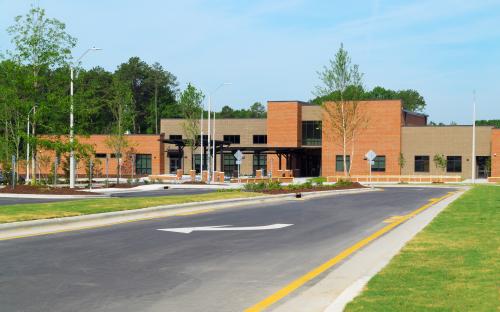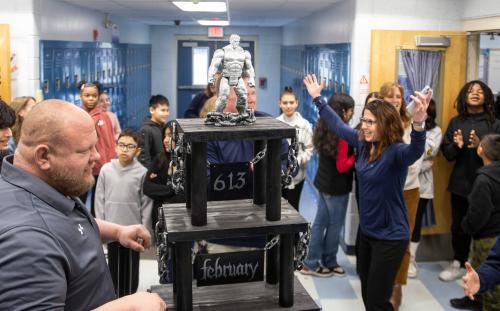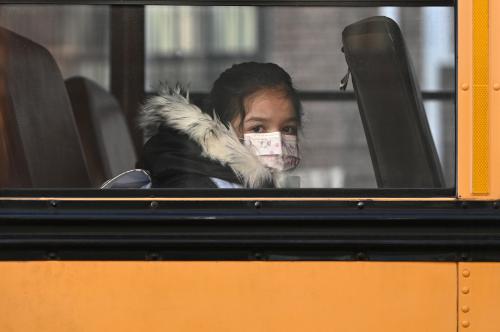Asbestos—a silent, enduring pandemic—has become a forgotten issue in the U.S. Yet, it continues to endanger the lives of children and school staff every day, bearing particularly on marginalized communities who lack the critical resources to protect themselves.
Consider the example of 11-year-old Deon Clark, who, while playing with his classmates in Philadelphia’s Lewis C. Cassidy Elementary School in 2018, was exposed to alarmingly high levels of asbestos. An investigation by the Philadelphia Inquirer found that the surface dust in one area of Clark’s classroom contained 4 million asbestos fibers per square centimeter, “50 times higher than the highest result for settled asbestos dust found indoors in apartments near ground zero after the 9/11 terror attacks.”
The profound health implications that asbestos carries as a lethal mineral bundle cannot be overstated: When inhaled, its invisible fibers lodge in human lungs and can cause cancer and other health complications even years after exposure. This led to its outright ban in over 50 countries. However, the ban has not yet been enacted in the U.S.
Despite growing public awareness of its fatal properties beginning in the 1970s, an attempt by the Environmental Protection Agency (EPA) to ban asbestos under the Toxic Substance Control Act in 1989 was overturned in 1991 by the Fifth Circuit Court of Appeals. Since then, the U.S. approach to dealing with the substance has largely been to oversee its presence in newer products and in buildings across the U.S.
To manage asbestos in schools, Congress passed the Asbestos Hazard Emergency Response Act (AHERA) in 1986. AHERA requires local educational agencies to “inspect their school buildings for asbestos-containing building material, prepare asbestos management plans and perform asbestos response actions to prevent or reduce asbestos hazards.”
While asbestos hazards in schools—like at Cassidy Elementary—are a wide problem, it is difficult to know the full extent of the issue because the last known systematic survey of asbestos in schools across the country was done nearly 40 years ago by the EPA. There is no federal collection of data on the conditions of schools.
More recently, the offices of Sen. Ed Markey (D-Mass.) and former Sen. Barbara Boxer (D-Calif.) tried to supplement the lack of current information on the state of asbestos in American schools by compiling a report for the Subcommittee on Superfund, Waste Management, and Regulatory Oversight. They sent surveys to all states, but received responses from only 20. Their investigation found that over two-thirds of local education agencies in responding states harbored asbestos, and that states did not appear to be systematically monitoring or addressing asbestos hazards in schools.
Nearly 40 years of inaction regarding asbestos in schools has reduced accountability for states’ oversight responsibilities. To have real action take place regarding environmental hazards in schools, the burden is often on parents, teachers, and occasionally investigative journalists to speak up and reveal troubling issues around access and equity. However, structural barriers prevent many low-income parents and parents of color from being as active in their child’s education as their white and wealthy counterparts. Time constraints from working multiple jobs to language barriers to lack of knowledge of environmental hazards are all obstacles that make it difficult for parents to pressure schools on environmental safety.
One case in which parents were able to push officials to act was in Malibu Beach High School. Twenty-one teachers reported various health problems after the school property was renovated. To manage the concerns of parents, school officials moved some classes and conducted various tests. However, a group of parents was unsatisfied with the rigor of the testing and broke into campus to do their own, launching a national media war with the school district.
While the parents of Malibu Beach High School were able to fight for their children’s safety, it is important to note that Malibu is one of the most affluent communities in the country—as exemplified by one parent, supermodel Cindy Crawford, offering to pay for the environmental hazards testing. Malibu Beach High School is also 77% white, compared to 23% white across the state public school system. The case of Malibu raises the question of how asbestos concerns are treated at schools that are not predominantly white, wealthy, and have parents to raise concerns.
State and local education systems are meant to monitor and address issues in a timely manner. However, the definition of timely in poor and predominantly minority school districts can be unclear—as exemplified by the case of A.S. Jenks Elementary School in South Philadelphia. Since 2013, the district documented damaged asbestos pipe insulation, including a 10-inch gouge near the ceiling heater fan. It was marked as “high” for air movement and activity, which can accelerate the spread of asbestos. In December 2017, the Philadelphia Inquirer swabbed the gym floor, and it tested positive for 55,500 asbestos fibers per square centimeter—over four years after it was first flagged.
In some cases, school officials don’t even monitor the situation adequately. In 2006, Baltimore incurred so many EPA recordkeeping violations that the county had to spend $245,538 on the violations in recordkeeping.
Parents expect their children to be safe when they go to school. But, in Philadelphia, parents can’t be sure. The Philadelphia Inquirer investigation estimates that approximately 11 million square feet of asbestos remain in the school district’s aging buildings based on district records. The Inquirer’s 11 school sample revealed 9 schools with high asbestos fiber counts in student-accessible areas of the school facility.
And Philadelphia parents aren’t alone.
Multiple cases of exposed asbestos have been found in different schools across the U.S.
- In 2018, parents were uninformed about their children’s potential exposure to asbestos after a contractor made errors at Lafayette Academy Charter School in New Orleans.
- In 2015, Chicago Public Schools had still not removed or repaired all the cases of asbestos noted by inspectors in 2013 at three schools.
- In 2010, children at Washington Elementary School in Berkeley, California, were potentially exposed to asbestos for five months in their cooking and music classroom.
The government has been failing in its responsibility to protect students and staff, but there are actions it can take to improve:
- Fund widescale school building upgrades, focusing on districts that experience chronic disinvestment. American schools are decaying, especially in communities that have historically faced disinvestment. For example, Detroit public schools—which have an 82% Black student population as compared to the national student population, which is 15% Black—on average have buildings over 60 years old. There is also firm evidence that unsafe school facilities reinforce educational inequities among marginalized students. School facility investment is badly needed, especially in school districts which have historically been under resourced. While the Senate-passed infrastructure bill largely excluded school facilities upgrades, policymakers could include funding in the corresponding reconciliation bill, which has yet to be finalized. To that end, a group of K-12 advocacy organizations are urging Congress to insert “at least $130 billion” for public school facilities into the bill.
- Strengthen enforcement of AHERA, especially in low-income communities and communities of color. The places of greatest hazard are in the poorest and oldest school districts—which often serve vulnerable student groups. These schools are the ones that deteriorate the most under inadequate regulation. Environmental health expert Marilyn Howarth explains that legislation like AHERA was created assuming that community members would also hold their school officials accountable. However, when people are not economically or educationally empowered to act, they can’t hold officials accountable. As a result, there needs to be action from an agency, like the EPA, to make sure that schools serving low-income students and children of color are also safe.
- Create publicly accessible and transparent summaries of school districts’ AHERA reports. In compliance with AHERA, many school districts do their inspections and file their reports. However, there is no transparency in how and when the schools handle the asbestos hazards that they flag. The EPA should make all AHERA reports publicly available online and create a summary which makes the data digestible to all readers, so that parents, school staff, and policymakers can understand the true state of their schools.
Asbestos has fallen to the wayside of mainstream policy discussions in the U.S., continuing to risk the health of kids and school personnel—especially those who have the least power to advocate for themselves. It’s time that the nation put the health of its most vulnerable populations first and enact a sustainable resolution to a crisis that should have ended long ago.







Commentary
The danger of America’s forgotten battle with asbestos
Students and school personnel remain at risk
August 26, 2021